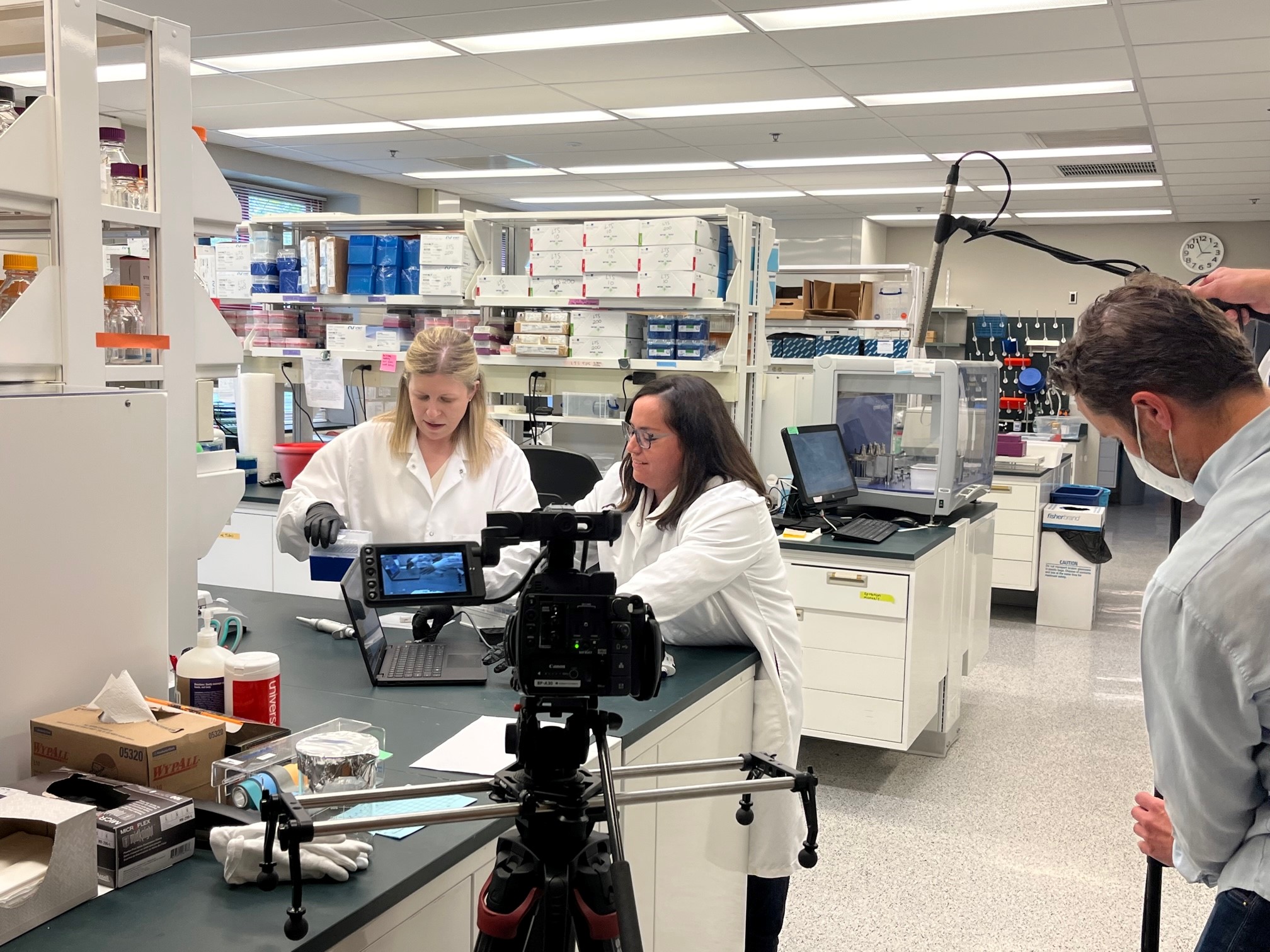Safeguarding antimicrobials for people and animals with genomics
Antimicrobial resistance (AMR) to bacterial infections in companion animals is an emerging concern. A way to better understand this and develop solutions is through genome sequencing, using technology similar to what is being used to track variants of COVID-19.

The need for public health and veterinary laboratories to perform whole genome sequencing for monitoring emerging pathogens and protecting the safety of people and animals has been clear, and is growing.
A recent paper published in Microbial Genomics covers research led by Laura Goodman, Ph.D., an assistant research professor at the Cornell College of Veterinary Medicine, a founding member of the department of Public and Ecosystem Health, as well as a faculty member at the Baker Institute for Animal Health. This research focuses on the importance of making sequencing technology more accessible for monitoring AMR in order to have a greater impact on public health. With the availability of smaller and more affordable sequencing platforms, the technological capability to incorporate this method for real-time surveillance and genomic epidemiology has greatly expanded. The study was supported by the Food and Drug Administration’s Veterinary Laboratory Investigation and Response Network (FDA Vet-LIRN).
An example of this technology being put to work appears in a recent article appearing in The Horse. Here, Goodman explains how genomics is being used to provide more clues about controlling the spread of resistant pathogens across different host species, including companion animals, a gap that Goodman states needed to be addressed, she says “because humans and livestock also share pathogens with dogs, cats, and horses—and previous data collected did not include these species.”
“When veterinarians and other health professionals submit bacteria for diagnostic culture and susceptibility testing, they help contribute to anonymous surveillance programs that support better understanding—and better control—of the spread of resistant pathogens across different host species, including our companion and working animals,” states Goodman. The data from this testing is then brought back to the clinical communities to inform stewardship efforts and help optimize treatment for the benefit of both animals and people. Support and technical guidance for veterinary stewardship efforts is also being provided by the CDC One Health AMR Program.
Read the full article in The Horse, here.


